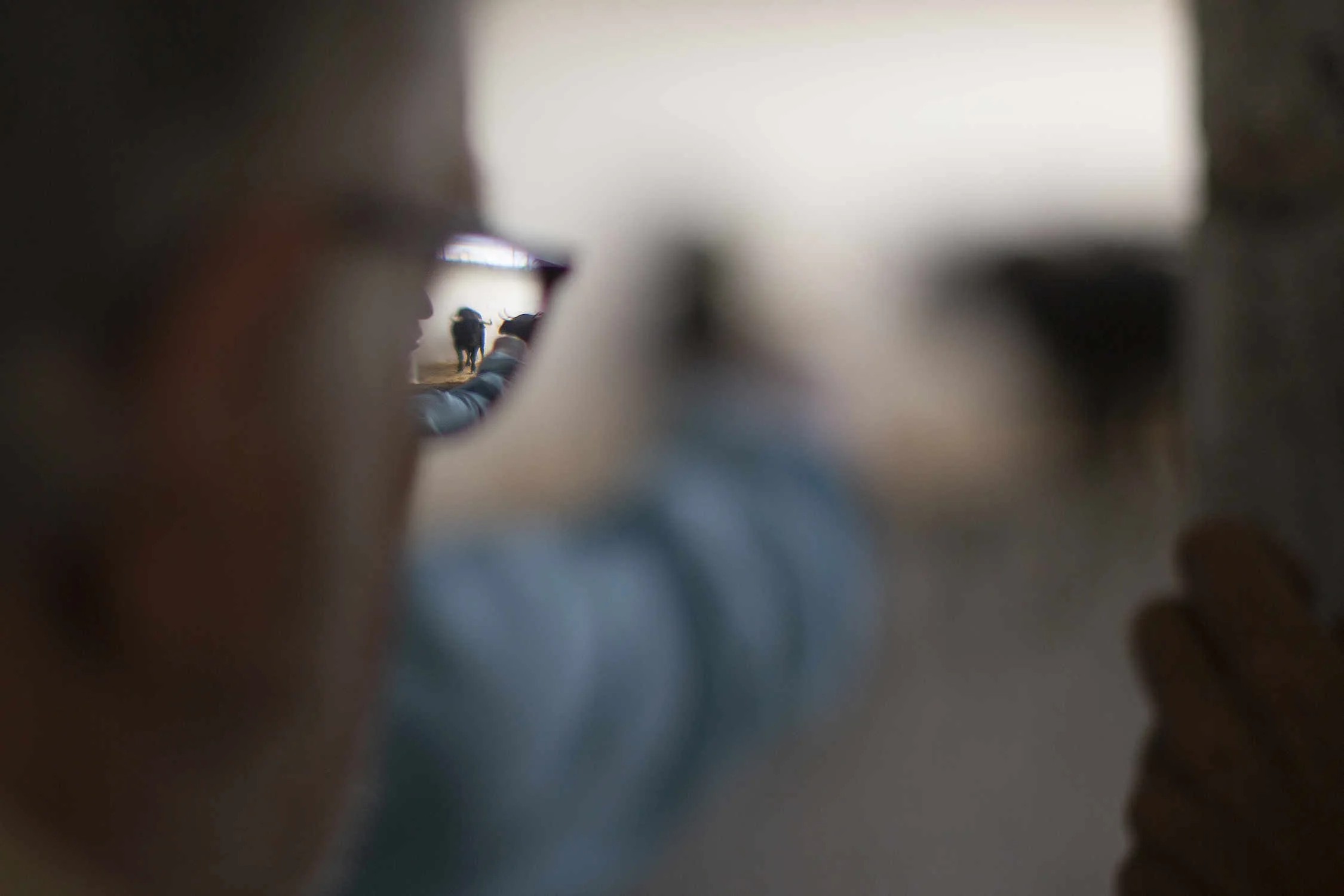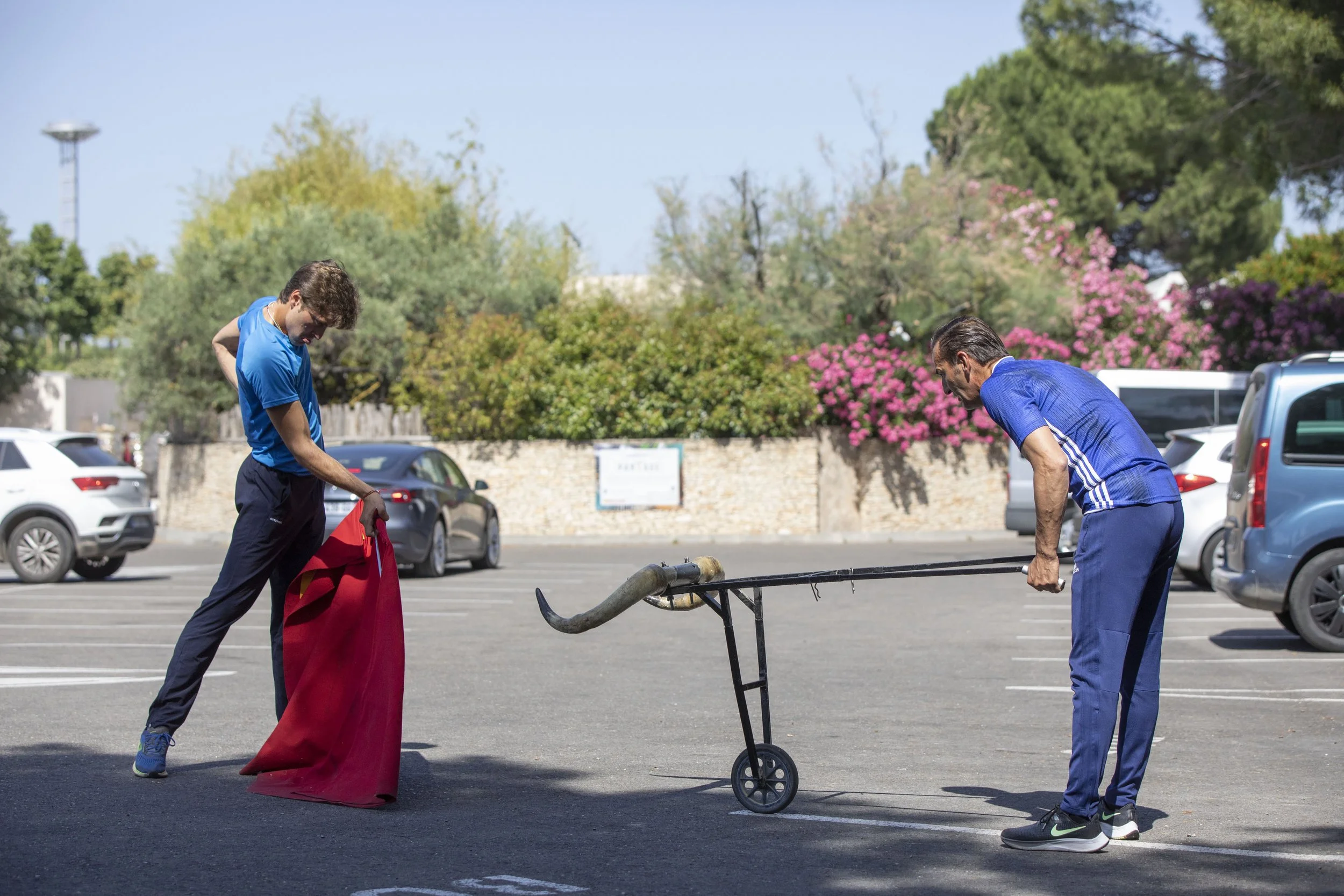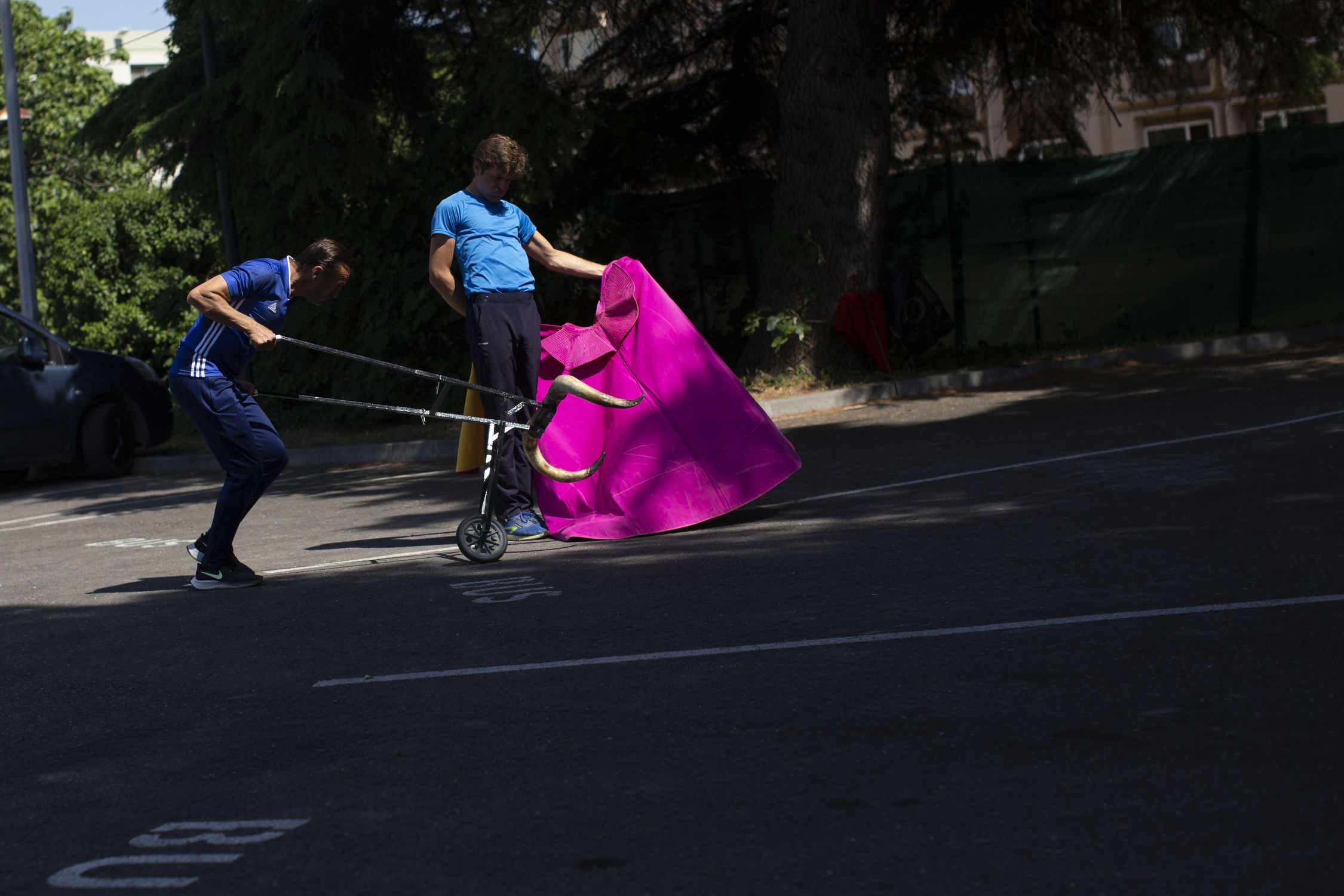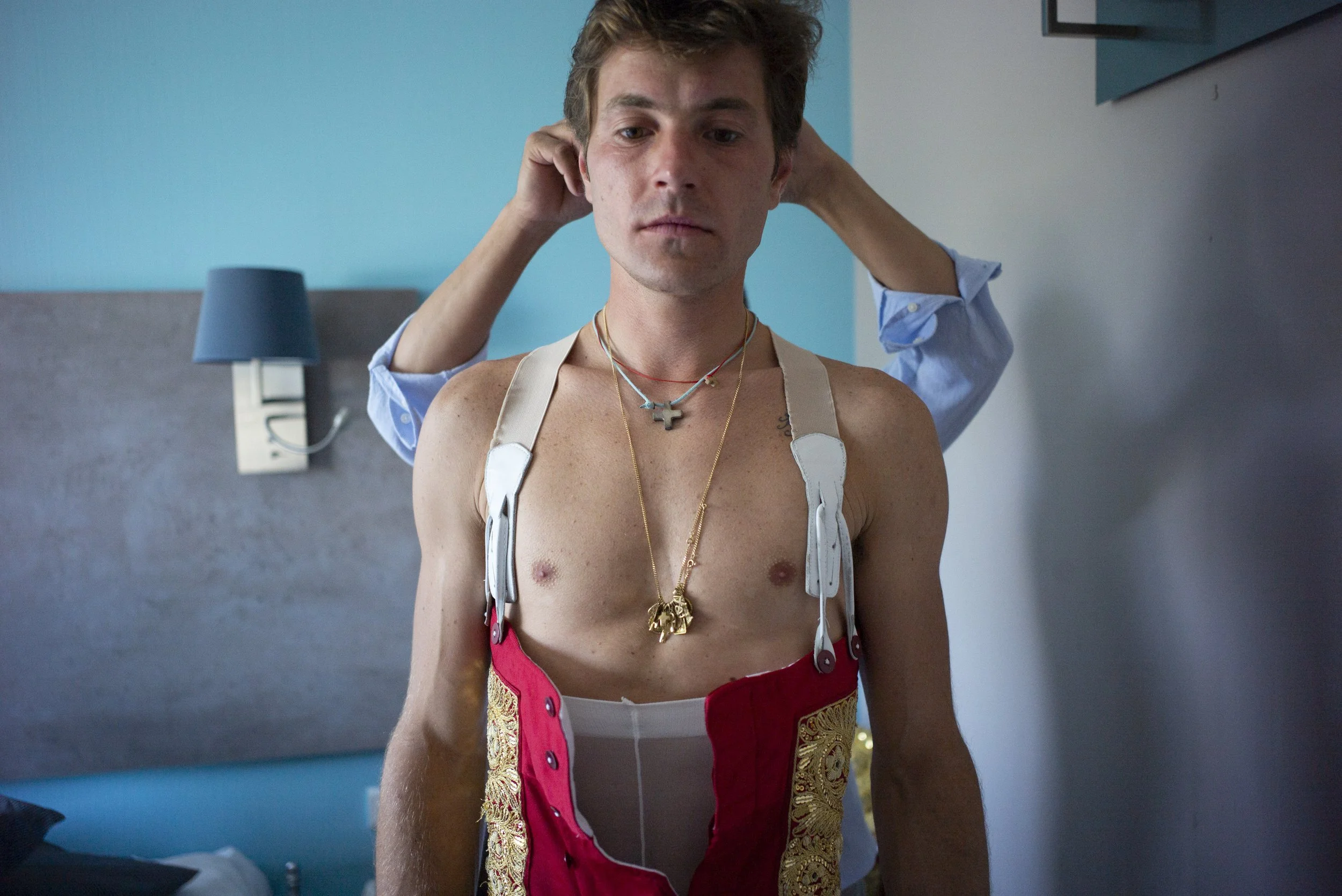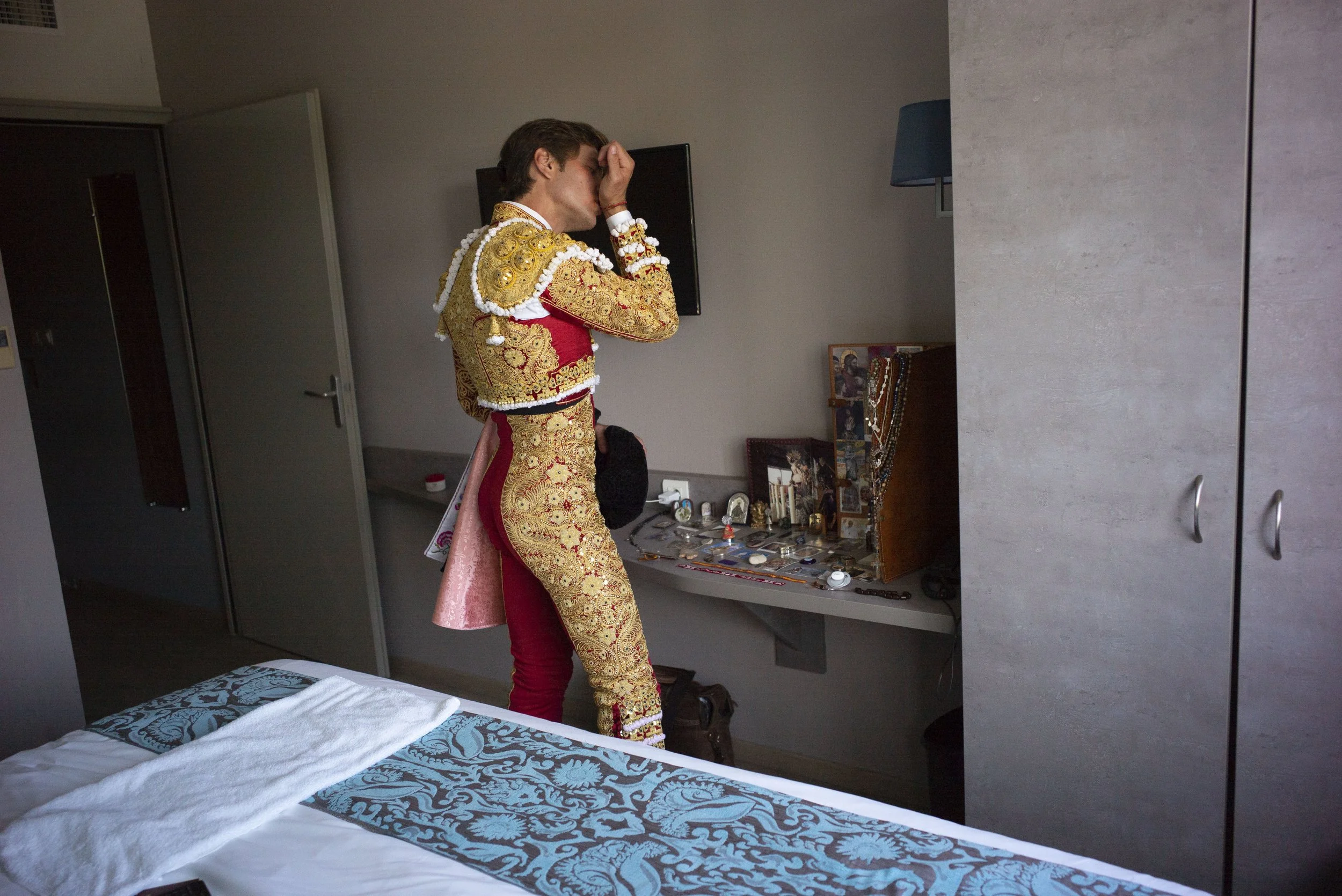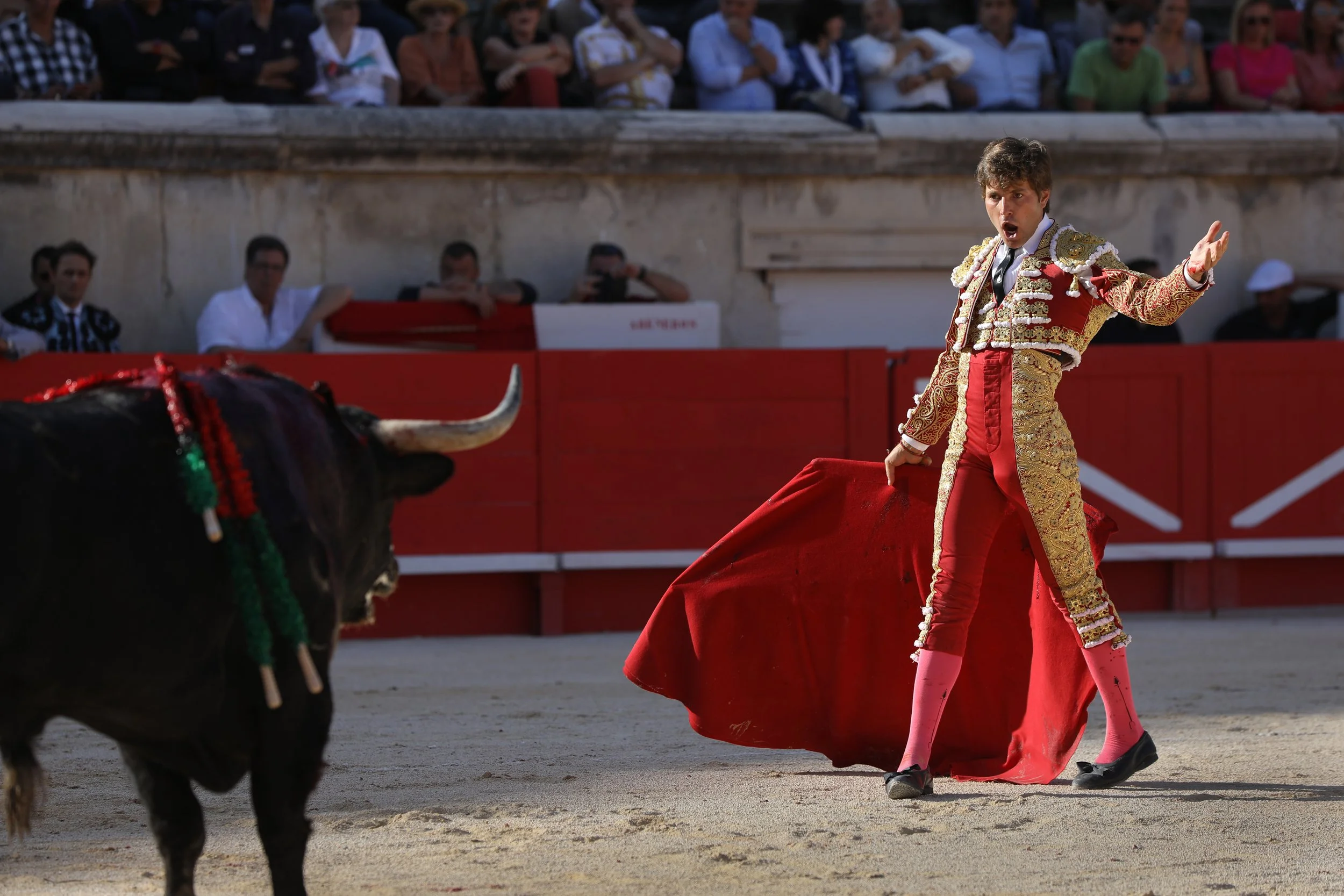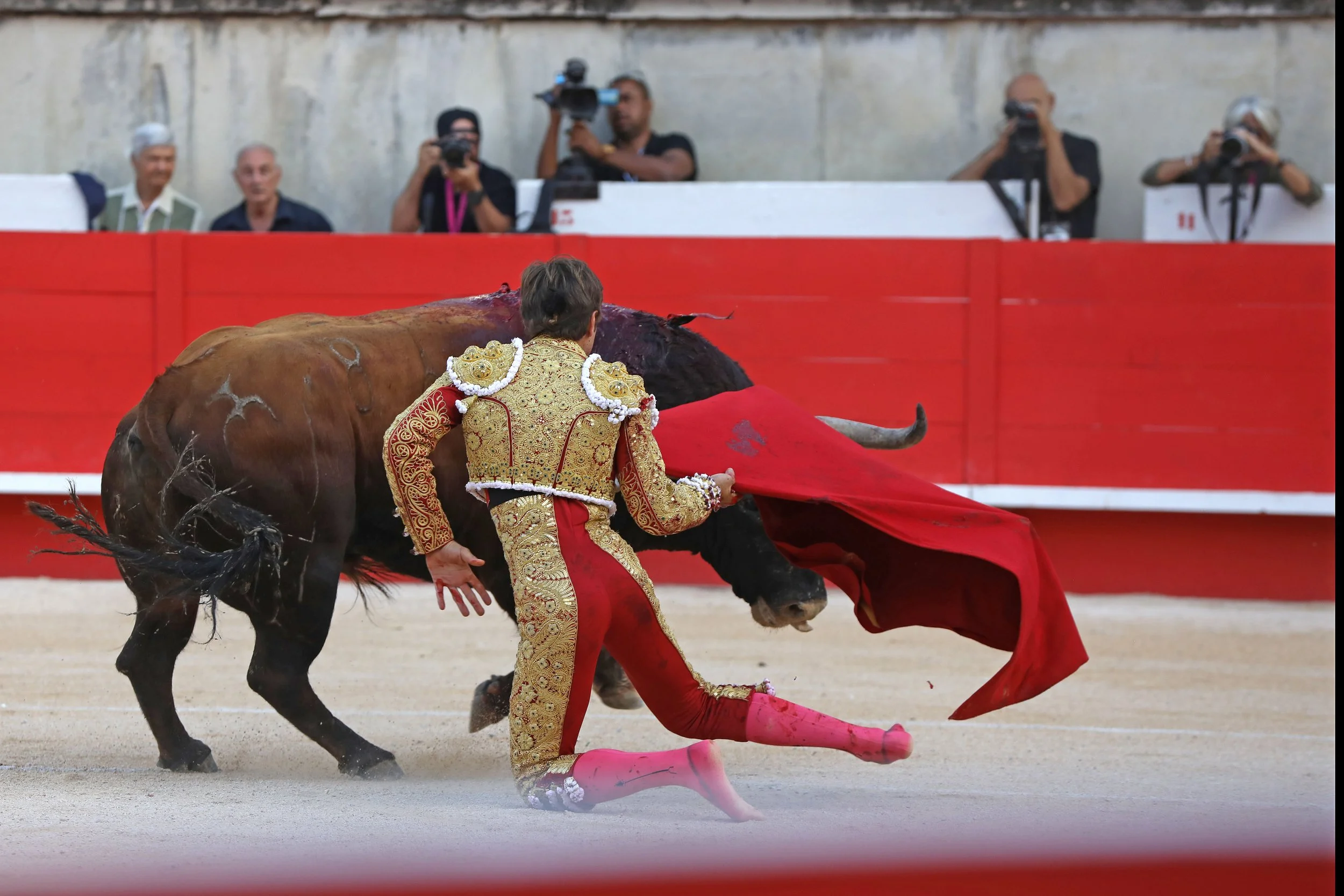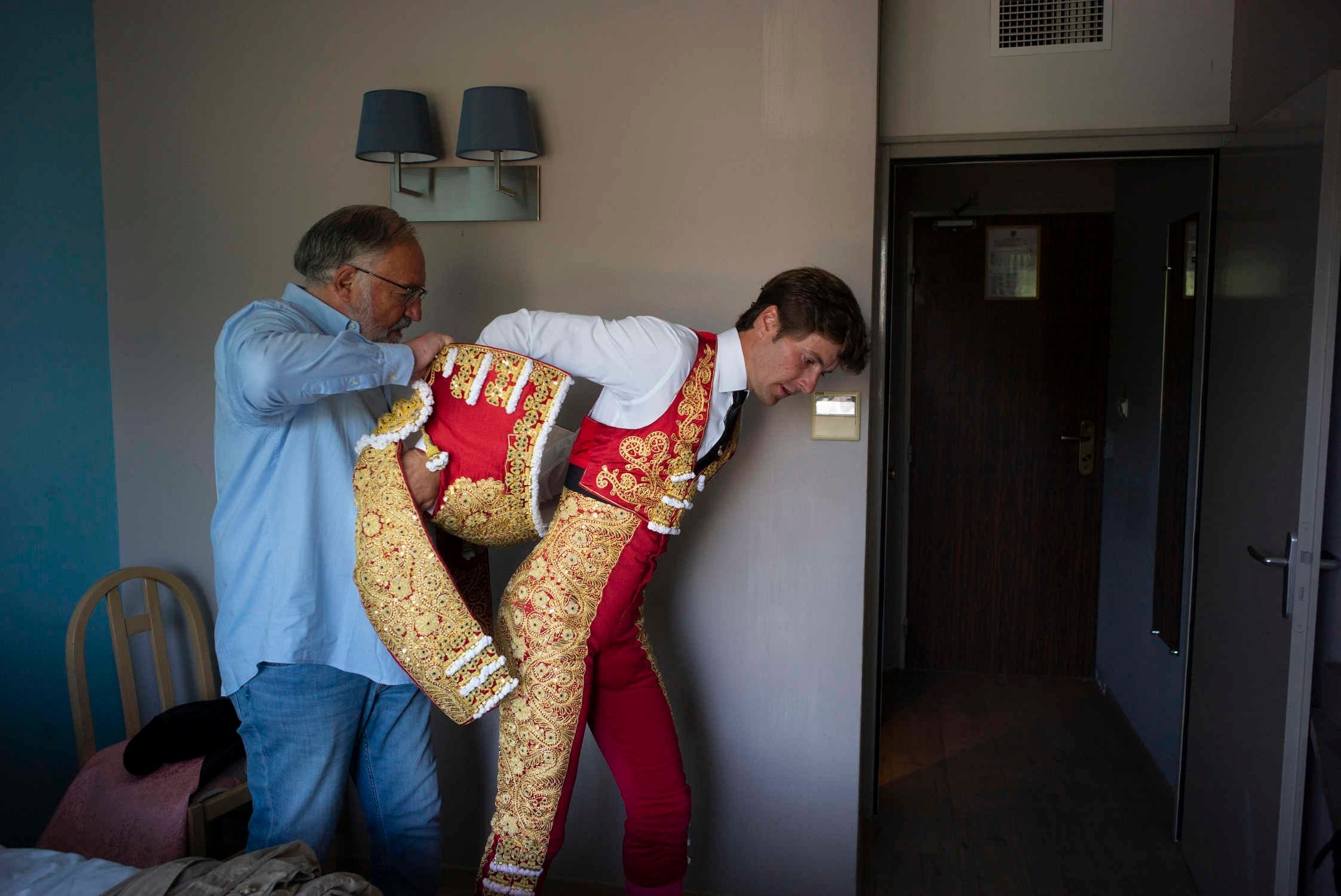
The Matador, a day in the life.
In the South of France the art of bullfighting carries with it a surprisingly popular following. It isn’t only Spain where it is deep-rooted in tradition, often being performed in some of the best-preserved Roman amphitheatres in the world. Arlesian matador Juan Leal has been a matador for 14 years, originally starting in his French hometown of Arles, but now bases himself in Spain.
“It is like an opera” says his grandfather. “The matador is an artist. A writer uses a pen, a painter uses a brush, a matador uses a bull.”
Juan Leal is paraded around Nimes stadium by his team and young supporters after being awarded champion over the other two matadors at the end of the day.
In the morning, Juan and his team meet the toros (bulls) that Juan will be fighting later that day. Some matadors don’t see the toros until they are both in the ring (sometimes due to superstition), but Juan prefers to meet them, and learn from them.
It is here where the draw happens - to decide which matador fights which toro. As is tradition, the toros names are written on cigaret paper, and drawn from a hat. The toros range between the ages of 4-5 years old and are solely raised for the purpose of bullfighting. The conditions where the fighting bulls are bred and reared are much more favourable compared with many cattle bred for common consumption.




Meanwhile, Juan’s ‘muletas’ (capes) are scrubbed and cleaned from the day before. As the capes are un-washable, the dried blood from the previous fight is scrubbed vigorously with a metal brush.
Juan has a team of nine close friends, each one with a particular job. Some are his banderilleros, who perform in the ring with him, whilst others might have a more ‘behind the scenes’ role such as his trainer or manager.
A few hours before the bullfight Juan and his team practice and prepare in the carpark of the hotel where they are staying. They use a traditional form of training: with horns attached to a trolly, replicating a bull, which is then wheeled toward Juan as he makes sure of his balance and awareness.
After practice Juan returns to his hotel room where he will get dressed before leaving for the arena. A matador and his team would spend a lot of time on the road, fighting in 50-60 corridas (bullfights) in a season. Once the season in Europe has ended, they then travel to South America, where they will perform another 50-60 corridas, totalling on average about 110 bullfights in one year. Juan had just driven nine and a half hours from Madrid, over night, so was without any sleep whatsoever.
In his hotel room, Juan gets dressed in his ‘traje de luces’ (suit of lights) which will include his ‘chaquetilla’ - a heavily embroidered jacket, intricately hand-made with sequins, purl and silver or gold thread. The jacket can cost anywhere between €6,000 and €9,000 and can take an entire team of craftspeople months to make one jacket.
As the bullfight encroaches, Juan will speak with his closest of friends before they exit his room, leaving just him to pray for a successful and safe corrida.
Juan enters the amphitheatre and waves the the crowd of supporters.
Matadors are revered by many in the South of France, with families considering a corrida as a fun and exciting day out.
The industry of bullfighting spans across Europe and South America, with more than 200,000 people working in the industry turning over a reported $4.8billion a year.
Each bullfight lasts approximately 20 minutes. It is exceptionally dangerous. Although Juan’s family support him, they dread every time he steps into the arena. “My wife never watches my fights… she can’t.”
It is here where the matador will try to dominate and tame the toro. “Within five minutes they change the bull from a wild beast to a dominated animal.” The bull is brought past the matador, taunted by the red cape, missing the matador by centimetres, in a choreography as particular as ballet.
The fight is graded by both the crowd, who play a very influential role in the outcome, and the watching judge. It is them that decide if the matador should be awarded any of the three ‘trophies’: the two ears and the tail of the bull.
Juan is seen applauding the dead bull after the corrida, as it is taken away by two horses. Contrary to popular belief, after the fatal blow (‘estocada’) with Juan’s sword the bull is taken to the butchers, and sold as meat to restaurants and public.
Very occasionally, if the battle between the toro and the matador is deemed worthy, the matador is lifted onto the shoulders of his cuadrilla (team) and paraded around the stadium as the crowd applauds him. Here, on this occasion, Juan was victorious, being paraded both inside and outside the stadium, mobbed by supporters both young and old who wanted to touch him and congratulate him.
When in the arena, with the bull, Juan states he only feels the emotion between him and the bull, and nothing else. “When I face the bull the emotion is special. Everything that I am thinking before stops. I am totally focussed on the corrida. The art is in my family, my uncles, my cousins. I don’t want to stop.”
Animal rights groups are known for being extremely vocal about the controversial art of bullfighting. When asked what Juan had to say about that he replied: “They only focus on the end, the last few seconds of the corrida, the death. It is so much more than that. They don’t see the art.”

